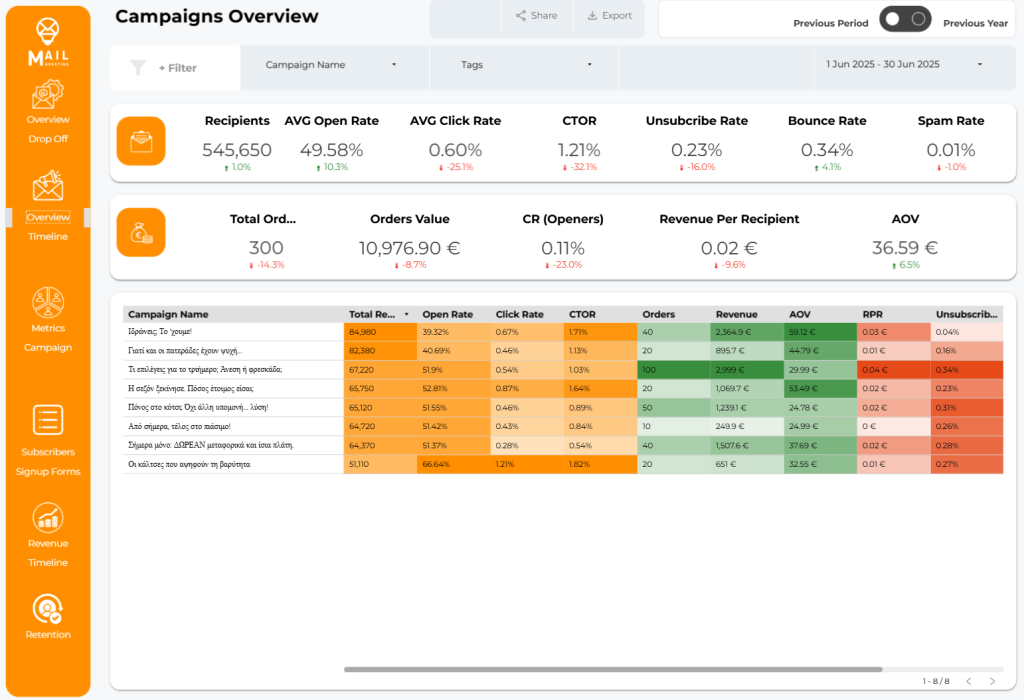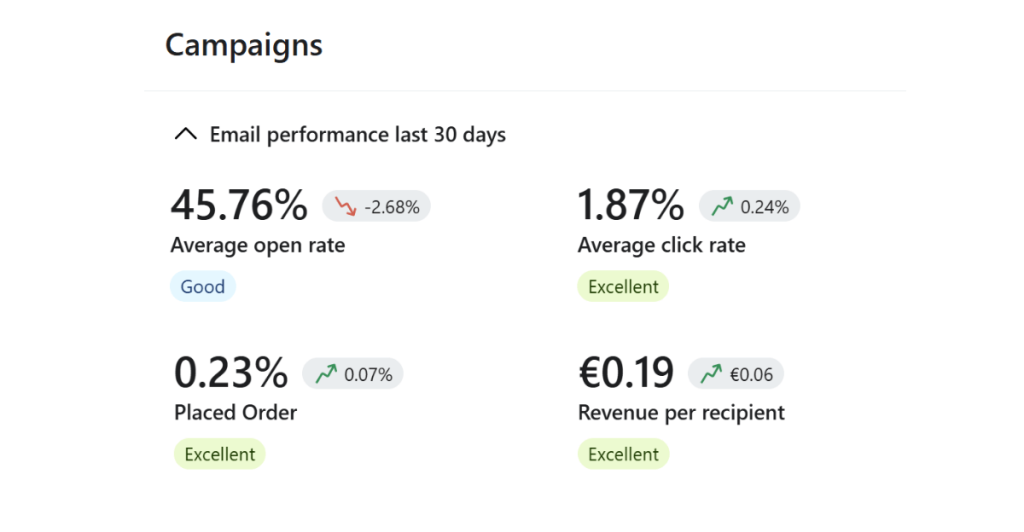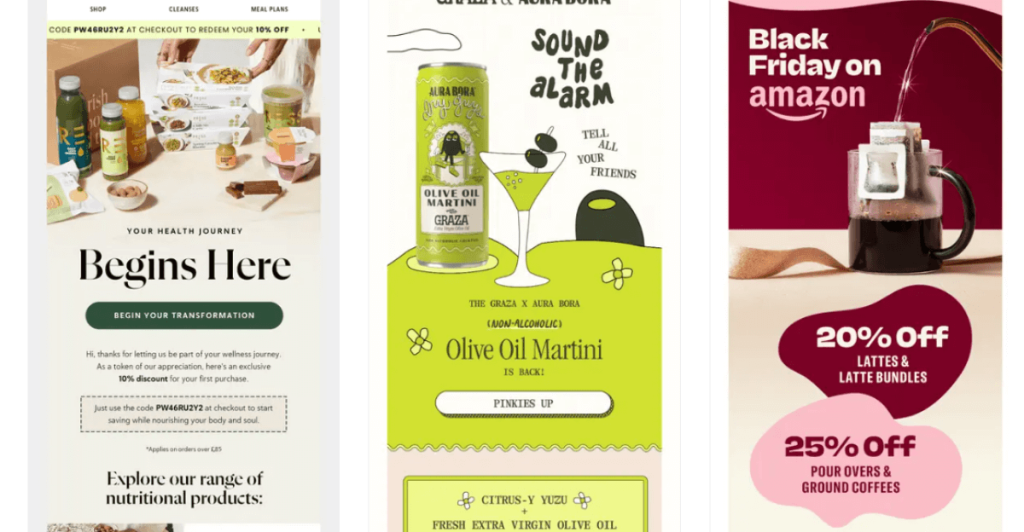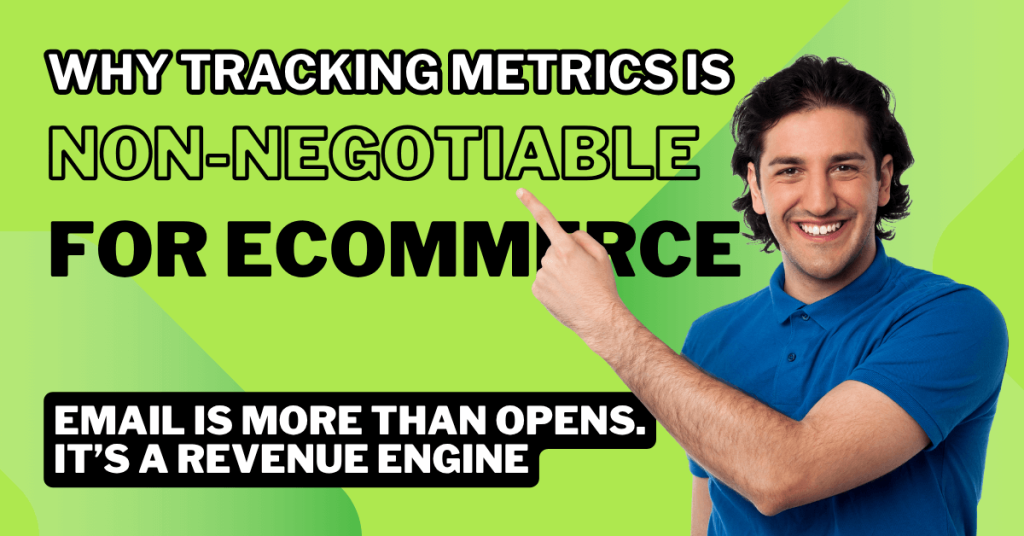Why Tracking Email Metrics is Non-Negotiable for Ecommerce
Email is More Than Opens—It’s a Revenue Engine
In ecommerce, email is more than a marketing channel—it’s your highest-leverage asset. But here’s the catch: if you’re not actively tracking your performance metrics, you’re essentially guessing what works.
Success in 2025 means getting scientific with your strategy. Tracking key metrics helps ecommerce brands optimize campaigns, automate smarter flows, reduce churn, and drive higher revenue per subscriber.
Data is Your Strategic Advantage—Use It or Lose It
Many ecommerce brands still treat email as a set-it-and-forget-it tool. But email marketing has matured. Today, data is the differentiator between brands that grow and brands that stagnate.
Here’s how proper metric tracking helps you:
- Optimize automated flows like welcome, cart recovery, and winbacks
- Refine segmentation for higher engagement and personalization
- Increase customer lifetime value (CLV) by triggering the right message at the right time
- Attribute ROI clearly, helping you justify spend and allocate budget with confidence

✅ Pro Tip: Build a KPI dashboard in Klaviyo or Google Looker Studio so you can monitor real-time email performance across flows and campaigns.
10 Foundational Email Metrics Every Ecommerce Brand Must Track
Let’s break down the most important email metrics, why they matter, and what good performance looks like.

1. Open Rate
- Definition: % of recipients who open your email
- Why it Matters: Indicates subject line strength and inbox placement
🟢 Target: 20–30%
Email Marketing Tip: A/B test subject lines weekly. Use preview text to complement and tease the email content.
2. Click-Through Rate (CTR)
- Definition: % of recipients who click on a link inside your email
- Why it Matters: Shows interest and engagement with your content
🟢 Target: 2–5%
Email Marketing Tip: Place one primary CTA button above the fold. Test link placement, copy, and button color.
3. Conversion Rate
- Definition: % of recipients who made a purchase
- Why it Matters: This is the clearest indicator of ROI
🟢 Target: 1–3% per campaign; higher (up to 5–10%) for automations
Email Marketing Tip: Match your offer to your segment. Don’t send discount-based campaigns to full-price buyers.
4. Revenue per Recipient (RPR)
- Definition: Total revenue / email recipients
- Why it Matters: The ultimate bottom-line metric
🟢 Target: 0.10€–0.30€+ for campaigns, 1.00€+ for automations
Email Marketing Tip: Focus on flows like Abandoned Cart, Post-Purchase, and Product Recommendations for strong returns.
5. Bounce Rate
- Definition: % of emails not delivered
- Why it Matters: Affects sender reputation and inbox placement
🟢 Target: Under 2%
Email Marketing Tip: Clean your list monthly. Use double opt-ins for higher-quality subscribers.
6. Unsubscribe Rate
- Definition: % of recipients who opt out
- Why it Matters: High rates signal poor targeting or over-messaging
🟢 Target: Under 0.5%
Email Marketing Tip: Segment your list. Limit blast campaigns and prioritize automation.
Advanced Email Metrics for Smarter Strategy
Once you master the basics, it’s time to level up.
7. List Growth Rate
Tracks how fast you’re acquiring and retaining subscribers.
📈 Formula:(New Subscribers - Unsubscribes) / Total Subscribers
Email Marketing Tip: Use multi-step popups, lead quizzes, and gated content to boost opt-ins. Analyze exit rate on signup forms.
8. Subscriber Lifetime Value (sLTV)
Shows how much each subscriber is worth over time.
Email Marketing Tip: Use tools like Klaviyo or Shopify analytics to attribute repeat purchases. Group subscribers into LTV tiers and target with VIP offers.
9. Engagement Score by Segment
Ranks subscribers based on interaction levels.
Use It For:
- Targeting winback campaigns
- Prioritizing high-LTV customers
- Pausing sends to cold subscribers
10. Email Flow Attribution
See which automated flows drive the most revenue.
| Flow | Revenue Contribution |
|---|---|
| Welcome Series | 20–25% |
| Abandoned Cart | 15–30% |
| Post-Purchase | 10–15% |
| Winback | 5–10% |
Email Marketing Tip: Review and optimize these flows quarterly. Use dynamic blocks and A/B test subject lines and timing.
Campaign Types & How to Read Their Metrics

Promotional Campaigns
- Open rate = Subject line strength
- Click rate = Offer relevance
- Revenue = Segment targeting accuracy
If open is low: Test subject lines
If click is low: Simplify layout or clarify offer
If revenue is low: Revisit timing and list targeting
Automated Flows
- Focus on revenue per recipient (RPR)
- Track flow completion rate
- Monitor conversion lag time
Email Marketing Tip: Use filters like “first-time buyer” or “repeat customer” to personalize flow branches.
Newsletters & Content Emails
- CTR reflects content quality
- Unsub rate shows frequency tolerance
Boost Value: Include customer stories, product education, and reviews.
What’s Considered “Good”? Benchmark Metrics
| Metric | Target Range |
|---|---|
| Open Rate | 20–30% |
| Click-Through Rate | 2–5% |
| Conversion Rate | 1–3% |
| RPE (Campaigns) | $0.10–$0.30+ |
| RPE (Flows) | $1.00+ |
| Bounce Rate | <2% |
| Unsubscribe Rate | <0.5% |
Always compare against your historical performance—not just industry averages.
How to Track These Metrics
Email Platforms
Tools like Klaviyo, Mailchimp, and Omnisend offer:
- Campaign dashboards
- Revenue attribution by flow
- Segmentation insights
- Real-time list health reports
Google Analytics + UTM Tags
Track email-driven revenue and behavior.
Email Marketing Tip: Add UTM tags to all email links. Use GA4 or Looker Studio to visualize performance.
CRM + Ecommerce Integrations
For deep LTV insights, integrate tools like:
- Ecommerce platform + Klaviyo
- Segment for multi-channel behavior syncing
Avoid These Common Mistakes
- Obsessing over open rates only
- Failing to track flow-specific ROI
- Ignoring internal/test data
- Over-emailing without segmentation
- Neglecting to A/B test elements (subject, CTA, design)
FAQs: Ecommerce Email KPIs
How often should I monitor email performance?
Weekly for campaigns, monthly for flows and list growth.
Are opens or clicks more important?
Clicks. They signal true intent. Use opens to diagnose issues with deliverability.
How do I calculate revenue per email?
Most platforms like Klaviyo do this automatically. Or use: Revenue ÷ Emails Sent
Should I delete cold subscribers?
Yes and no. After 60–90 days of inactivity, suppress or sunset them. Keeps your list clean and deliverability high. So suppress them but do not delete, as they can be used for targeting by syncing them to other ads platforms.
Is a high unsubscribe rate always bad?
No—sometimes it trims the fat. But if it spikes, revisit your frequency, value, and targeting.
Final Thoughts: Track What Matters, Grow What Works
Email isn’t just a checkbox in your marketing toolkit. It’s the most measurable, profitable, and customer-centric channel—when done right.
With the right KPIs and consistent analysis, your ecommerce brand can:
✅ Grow faster
✅ Retain better
✅ Personalize deeper
✅ Spend smarter
At The Mail Effect, we help brands turn email data into revenue-generating strategies. From segmentation to automation, we track what truly drives ecommerce growth.
📬 Ready to build smarter email flows that convert? Let’s make your data work harder.




